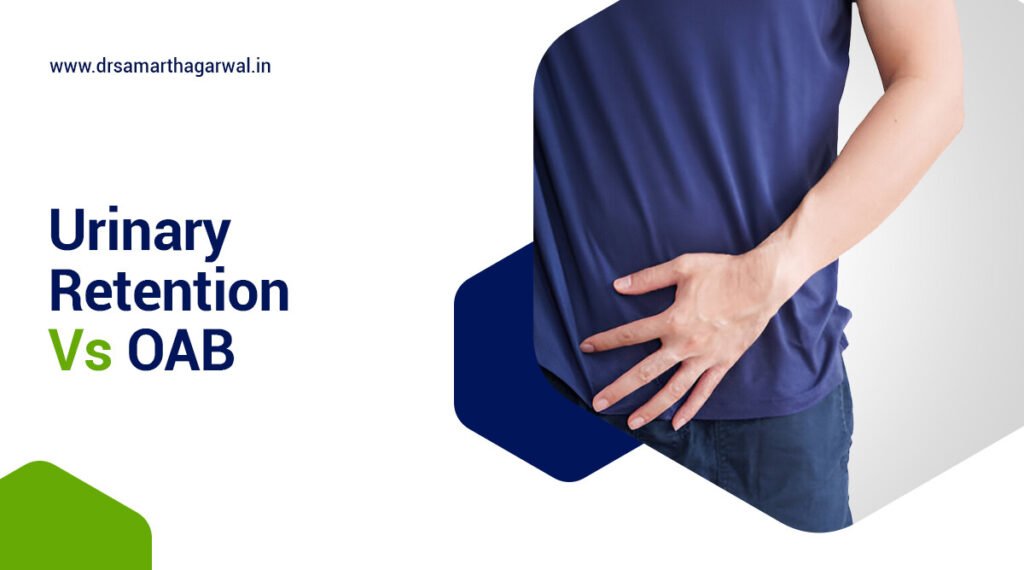Groin pain is a common and uncomfortable condition that can result from various factors, including muscle strains, sports injuries, or medical issues. Symptoms often include dull aches, sharp pain, and discomfort in the lower abdomen or inner thigh, sometimes accompanied by swelling or difficulty walking.
Causes range from muscle strains, particularly in athletes, to hernias and hip problems. Muscle strains are common with sudden movements, while hernias involve tissue protruding through a weak abdominal wall, and hip issues can lead to referred pain in the groin.
Treatment varies based on the cause. Rest, ice, and over-the-counter pain relievers like ibuprofen or acetaminophen can help reduce pain and inflammation. Physical therapy may strengthen muscles and improve flexibility, while severe cases might require surgery to repair hernias or other underlying issues.
At-Home Treatment Options
When dealing with minor injuries or discomfort, at-home treatment options can provide effective relief and promote healing. These methods are often accessible and can be easily integrated into your daily routine.
Initial Care
- Ice Packs: Apply ice packs to the affected area for 15-20 minutes every hour to reduce swelling and numb the pain. Ensure to wrap the ice pack in a cloth to avoid direct contact with the skin.
- Over-the-Counter Medications: Nonsteroidal anti-inflammatory drugs (NSAIDs) like ibuprofen or naproxen can help alleviate pain and reduce inflammation. Follow the recommended dosage on the packaging.
Home Remedies
- Heat vs. Cold Therapy: After the initial 48 hours of using ice, switch to heat therapy to relax muscles and improve blood flow. Use a heating pad or warm towel for 15-20 minutes.
- Natural Remedies: Consider using turmeric or ginger tea, known for their anti-inflammatory properties. Additionally, Epsom salt baths can help soothe muscle tension.
Understanding Groin Pain
Groin pain is a common issue that can significantly impact daily activities and athletic performance. It often arises from various underlying conditions, and understanding its causes and symptoms is essential for effective management and treatment. This guide provides an overview of groin pain, its common causes, and associated symptoms.
Definition and Overview
Groin pain refers to discomfort in the area where the abdomen meets the thigh. It can range from mild to severe and may affect mobility. The pain can be acute, arising suddenly, or chronic, developing gradually over time. Identifying the source of the pain is crucial for determining the appropriate treatment.
Common Causes
- Muscle Strain: Overstretching or tearing of the groin muscles, often due to sports or physical activity. This is one of the most prevalent causes of groin pain, particularly in athletes involved in running, jumping, or sudden directional changes. Risk factors include age, previous injuries, and inadequate warm-up routines.
- Hernia: A condition where an internal organ pushes through a weak spot in the abdominal wall, causing pain and discomfort. Inguinal hernias are the most common type associated with groin pain and may require surgical intervention.
- Less Common Causes: Conditions such as hip impingement, osteitis pubis (inflammation of the pubic symphysis), or referred pain from lower back issues can also lead to groin pain. Other potential causes include infections, tumors, or conditions affecting the hip joint.
Symptoms
- Types of Pain: Groin pain can be sharp, dull, or radiating. It may vary in intensity based on activity level and can be accompanied by stiffness or swelling in the affected area.
- Pain During Movement: Discomfort may increase during activities like walking, running, or movements that involve hip adduction (bringing the legs together). Pain may also be exacerbated by activities that require sudden starts or stops.
- Associated Symptoms: In some cases, groin pain may be accompanied by swelling, bruising, or a noticeable bulge in the groin area (in the case of a hernia). Additionally, individuals may experience difficulty with certain movements, such as climbing stairs or getting in and out of a car.
- Diagnosis: A thorough physical examination, along with imaging tests such as X-rays or MRIs, may be necessary to accurately diagnose the cause of groin pain.
- Treatment Options: Treatment may include rest, ice application, physical therapy, and in some cases, surgery. Early intervention and proper rehabilitation are key to preventing chronic issues and ensuring a full recovery.
- Prevention: To reduce the risk of groin pain, individuals should engage in proper warm-up exercises, maintain flexibility through stretching, and strengthen the muscles around the groin and hips.
Preventing Groin Pain
Preventing groin pain is essential for maintaining an active lifestyle and avoiding potential injuries that can sideline you for extended periods. Taking proactive measures can significantly reduce the risk of groin injuries and pain, allowing individuals to engage in their favorite activities without discomfort. This section outlines effective strategies for prevention, including strengthening exercises and lifestyle changes.
Importance of Prevention
Preventing groin pain is crucial not only for athletes but for anyone who engages in physical activity. By implementing preventive measures, individuals can enhance their performance, reduce the likelihood of injury, and promote long-term joint and muscle health. Awareness of risk factors and proactive strategies can lead to a more enjoyable and pain-free experience during physical activities.
Strengthening Exercises
- Stretching Techniques: Incorporate dynamic stretches before activities, such as leg swings and walking lunges, to prepare the muscles for movement. Afterward, static stretches like the butterfly stretch and seated forward bend can help maintain flexibility in the groin area and prevent tightness.
- Adductor Strengthening: Perform exercises like side lunges, resistance band adductor exercises, and clamshells to strengthen the inner thigh muscles. Strong adductors provide better support to the groin and help stabilize the pelvis during movement.
- Core Strengthening: A strong core is essential for overall stability and can help reduce the strain on the groin. Incorporate exercises like planks, bridges, and pelvic tilts to enhance core strength and support proper body mechanics.
Lifestyle Changes
- Proper Warm-Up/Cool Down: Always warm up before engaging in physical activities with light aerobic exercises and dynamic stretches to increase blood flow to the muscles. Cooling down afterward with gentle stretching helps to relax the muscles and prevent stiffness.
- Ergonomics: Maintain proper posture and body mechanics during activities, whether exercising or performing daily tasks, to reduce strain on the groin. This includes using correct lifting techniques and being mindful of body alignment during movements.
- Hydration and Nutrition: Staying well-hydrated and maintaining a balanced diet rich in nutrients can support muscle function and recovery. Proper hydration helps prevent muscle cramps, while a diet with adequate protein and vitamins aids in muscle repair and overall health.
- Gradual Progression: When starting a new exercise program or increasing intensity, do so gradually to allow the body to adapt. Sudden increases in activity level can lead to overuse injuries, including groin pain.
By incorporating these preventive strategies into your routine, you can significantly reduce the risk of groin pain and enhance your overall physical well-being.
When to Seek Professional Help
- Understanding when to seek professional help for groin pain is crucial for effective diagnosis and treatment. While many cases of groin pain can be managed at home, certain symptoms may indicate a more serious underlying condition that requires medical intervention. This section outlines key indicators for seeking help and the potential diagnostic and treatment options available.
Identifying Severe Symptoms
- Swelling or Bruising: If you notice significant swelling, bruising, or a bulge in the groin area, seek medical attention. These symptoms may indicate a muscle tear, hernia, or other serious injury that could require prompt treatment to prevent complications.
- Persistent Pain: If pain persists for more than a few days despite home treatment, consult a healthcare provider. Chronic pain may signal an underlying issue that needs to be addressed, such as a tendon injury or joint problem.
- Difficulty Walking or Weight-Bearing: If you experience severe difficulty walking, standing, or bearing weight on the affected leg, it is essential to seek medical help. This could indicate a more serious injury, such as a fracture or severe muscle strain.
- Numbness or Tingling: The presence of numbness, tingling, or weakness in the leg or groin area may suggest nerve involvement or other serious conditions that require evaluation by a healthcare professional.
- Swelling or Bruising: If you notice significant swelling, bruising, or a bulge in the groin area, seek medical attention. These symptoms may indicate a muscle tear, hernia, or other serious injury that could require prompt treatment to prevent complications.
- Consulting a Healthcare Provider
- Diagnostic Procedures: A healthcare provider may recommend imaging tests like an MRI or ultrasound to determine the cause of the pain. These tests can help visualize soft tissue injuries, hernias, or other structural issues that may not be apparent through a physical examination.
- Physical Examination: A thorough physical examination will often be the first step in assessing groin pain. The healthcare provider will evaluate the range of motion, strength, and any areas of tenderness to help identify the source of the discomfort.
- Treatment Options: Depending on the diagnosis, treatment may include physical therapy, medications, or in some cases, surgery. Physical therapy can help strengthen the muscles around the groin and improve flexibility, while medications may be prescribed to manage pain and inflammation.
- Follow-Up Care: After an initial diagnosis and treatment plan, follow-up appointments may be necessary to monitor progress and make any needed adjustments to the treatment approach. This is especially important for chronic conditions or injuries that require ongoing management.
- Diagnostic Procedures: A healthcare provider may recommend imaging tests like an MRI or ultrasound to determine the cause of the pain. These tests can help visualize soft tissue injuries, hernias, or other structural issues that may not be apparent through a physical examination.
- Recognizing the signs that warrant professional help can lead to timely intervention and a more effective recovery process. If you experience any of the severe symptoms mentioned, do not hesitate to consult a healthcare provider for a comprehensive evaluation.
Rehabilitation and Recovery
Rehabilitation and recovery are critical components of managing groin pain and ensuring a successful return to normal activities. A structured approach to recovery can help restore strength, flexibility, and function while minimizing the risk of re-injury. This section outlines the importance of physical therapy and the principles of a gradual return to activity.
Physical Therapy
- Role in Recovery: A physical therapist can design a personalized rehabilitation program tailored to your specific needs and goals. This program will focus on strengthening the groin muscles, improving flexibility, and enhancing overall functional movement. The therapist will assess your condition and create a plan that addresses any imbalances or weaknesses.
- Range of Motion Exercises: Engage in specific exercises to restore full range of motion and prevent future injuries. These exercises may include gentle stretching, mobility drills, and targeted movements that promote flexibility in the hip and groin area. Regularly performing these exercises can help maintain joint health and reduce stiffness.
- Strengthening Exercises: In addition to range of motion exercises, a physical therapist will incorporate strengthening exercises that target the groin and surrounding muscles. This may include resistance training, bodyweight exercises, and functional movements that mimic daily activities or sports-specific actions.
- Education and Prevention: Physical therapists also provide education on proper body mechanics, posture, and techniques to prevent future injuries. Understanding how to move safely and effectively can empower individuals to engage in physical activities with confidence.
Gradual Return to Activity
- Monitoring Pain Levels: Pay attention to your body and avoid activities that exacerbate pain during recovery. It is essential to differentiate between normal discomfort associated with rehabilitation and pain that indicates a potential setback. Keeping a pain journal can help track progress and identify patterns.
- Listening to Your Body: Gradually increase activity levels, ensuring you do not push through pain, which can lead to re-injury. Start with low-impact activities and slowly progress to more demanding exercises as strength and flexibility improve. This approach allows the body to adapt and reduces the risk of overloading the injured area.
- Setting Realistic Goals: Establish achievable short-term and long-term goals for your recovery. This may include milestones such as returning to specific activities, improving strength, or achieving a certain range of motion. Setting realistic goals can help maintain motivation and provide a clear path for recovery.
- Incorporating Cross-Training: While recovering, consider incorporating cross-training activities that do not strain the groin, such as swimming or cycling. These activities can help maintain cardiovascular fitness and overall strength without putting excessive stress on the injured area.
By following a structured rehabilitation program and gradually returning to activity, individuals can effectively manage groin pain and enhance their overall physical well-being. Prioritizing recovery and listening to the body are essential for achieving long-term success and preventing future injuries.

Contact Dr. Samarth Agarwal if you have any questions or concerns about your Urinary health!






